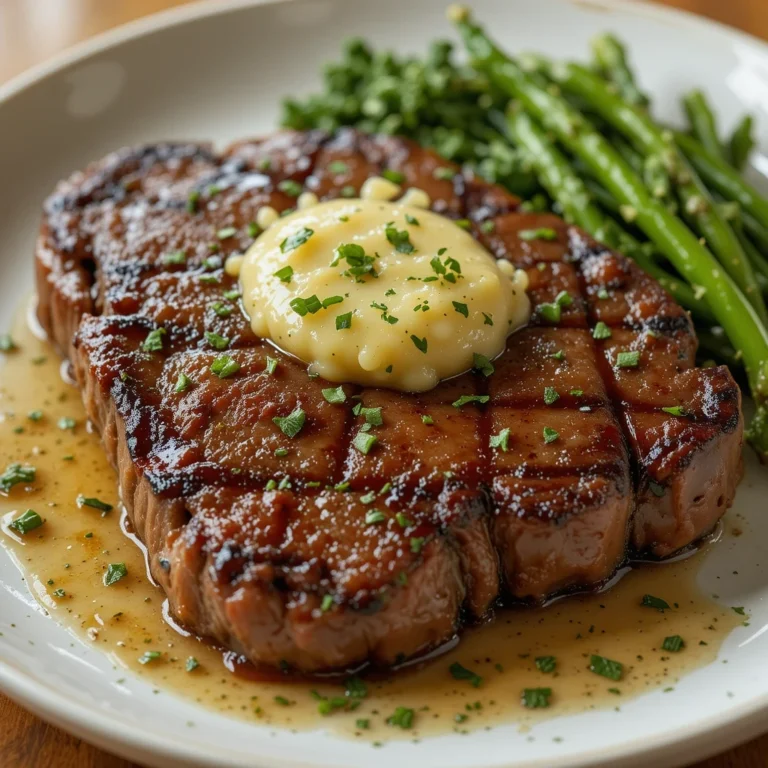Kangaroo meat wasn’t always on my radar. But during a trip through the Australian outback, I had my first bite—grilled over an open flame, seasoned simply with salt and native pepperberry. I wasn’t expecting much, but that first tender, flavorful bite changed everything. It was lean, rich, and incredibly satisfying—like the best parts of beef, but lighter. That meal sparked a curiosity that led me to explore kangaroo meat in my own kitchen.
What I found was a protein powerhouse: naturally lean, high in iron, rich in B vitamins, and low in saturated fat. It’s also one of the most environmentally sustainable red meats out there. Because kangaroos are wild-harvested in Australia and require no feed, water, or farmland the way traditional livestock does, they leave a much smaller ecological footprint.
In this guide, we’ll dive into the world of kangaroo meat—what makes it special, how to cook it to bring out its best flavor, and why it might just earn a spot in your regular meal rotation. Whether you’re a culinary adventurer or someone simply looking for a healthy, ethical alternative to traditional meats, this is your invitation to try something new—and delicious.
Table of Contents
Table of Contents
What is Kangaroo Meat?
Kangaroo meat comes from wild kangaroos native to Australia. Unlike conventional livestock, kangaroos are not farmed; they roam freely in their natural habitats, grazing on a variety of native plants. This wild origin contributes to the meat’s unique flavor and nutritional profile. Kangaroo meat is dark red, lean, and has a slightly gamey taste, often compared to venison or buffalo. It’s versatile and can be used in a variety of dishes, from steaks to stir-fries.
A Wild, Sustainable Protein Source
One of the most compelling aspects of kangaroo meat is its sustainability. Kangaroos are harvested under strict regulations in Australia, ensuring that populations remain healthy and ecosystems are not disrupted. This wild harvesting method stands in stark contrast to traditional livestock farming, which often involves significant environmental costs.
🔹 No factory farming – Kangaroos live naturally in the wild, free from the confined spaces and intensive practices associated with factory farming. This not only benefits the animals but also results in meat that is free from the stress hormones sometimes found in farmed animals.
🔹 No added hormones or antibiotics – Since kangaroos are not raised in controlled environments, their meat is 100% natural, free from artificial growth promoters or medications commonly used in livestock farming.
🔹 Minimal environmental impact – Kangaroos require no additional resources like water, feed, or land to thrive. They are adapted to Australia’s arid environment and graze on native vegetation, making their ecological footprint significantly smaller than that of traditional livestock.
For those exploring organic meat options, check out this organic meat guide to see how kangaroo meat fits into a clean-eating lifestyle.
Is Kangaroo Meat Healthy?
Absolutely! Here’s why nutritionists and athletes love it:
🥩 High Protein – 21-25g per 100g serving (more than beef)
🔥 Low Fat – Only 1-2% fat compared to 15-20% in beef
💪 Rich in Iron & Zinc – Supports muscle function & immune health
🐟 Omega-3 Fatty Acids – Similar to fish, great for heart health
Nutritional Benefits
Kangaroo meat is a powerhouse of nutrition. It’s exceptionally high in protein, making it an excellent choice for those looking to build muscle or maintain a healthy diet. At the same time, it’s remarkably low in fat, with less than 2% fat content in most cuts. This makes it a heart-healthy option, particularly for those monitoring their cholesterol levels or saturated fat intake.
In addition to being lean, kangaroo meat is rich in essential nutrients. It contains high levels of iron, which is crucial for maintaining energy levels and preventing anemia. It’s also a good source of zinc, which supports immune function, and omega-3 fatty acids, known for their anti-inflammatory properties and benefits to brain health. The meat is also packed with B vitamins, particularly B12, which is essential for nerve function and the production of DNA.
Looking for high-protein meal ideas? Try incorporating kangaroo meat into your diet with these high-protein lunch recipes.

How Does Kangaroo Meat Taste?
Flavor & Texture
Kangaroo meat offers a rich, gamey flavor similar to venison, but with a milder, slightly sweeter taste. Since kangaroos are wild-grazing herbivores, their meat develops a deep, earthy flavor with strong umami notes.
Despite being leaner than beef, kangaroo meat remains tender when cooked correctly. However, due to its low fat content (only 1-2%), it can quickly become dry and chewy if overcooked. The key to preserving its juicy texture is to cook it medium-rare to medium and allow it to rest before serving.
🔹 Mildly gamey taste, not as intense as wild boar or lamb.
🔹 Lean and firm texture, similar to bison or venison.
🔹 Absorbs marinades well, making it a great meat for bold flavors.
🔹 Pairs beautifully with red wine, garlic, and rosemary.
If prepared properly, kangaroo meat is succulent, flavorful, and a great alternative to traditional red meats! 🍽️
For those who enjoy tender cuts like beef cheeks, check out this beef cheek meat guide for comparison.
How to Cook Kangaroo Meat: Best Techniques & Recipes
Cooking kangaroo meat requires careful attention due to its low fat content, which makes it prone to dryness if overcooked. However, with the right techniques, it becomes tender, juicy, and incredibly flavorful.
Cooking Tips to Avoid Toughness
✔ Marinate for at least 30 minutes – Since kangaroo meat is lean, marinating helps break down muscle fibers and infuse moisture. Olive oil, citrus, garlic, and rosemary work exceptionally well.
✔ Cook quickly over high heat – Kangaroo meat is best cooked medium-rare to medium. High heat ensures a seared crust while keeping the inside tender and juicy. Grilling, pan-searing, or stir-frying are the best methods.
✔ Rest the meat for 5 minutes – Allowing kangaroo meat to rest before slicing helps the juices redistribute, preventing dryness. Cutting too soon can cause the flavorful juices to escape.
🔥 Pro Tip: Avoid slow-cooking or overcooking kangaroo meat unless making stews, as it lacks the fat needed for extended cooking times.
By following these tips, you can enjoy succulent, flavorful kangaroo steaks, burgers, and stir-fries that rival the best cuts of beef! 🍽️
🔗 Want to master slow-cooked meats? Check out these boneless beef short ribs for inspiration.

Easy & Delicious Kangaroo Meat Recipes
Kangaroo Steak with Garlic & Herb Butter
📝 Ingredients:
- 2 kangaroo steaks
- 2 tbsp olive oil
- 1 garlic clove, minced
- 1 tbsp balsamic vinegar
- 1 tbsp fresh rosemary
- Salt & pepper
🔥 Instructions:
- Marinate steaks for 30 minutes in olive oil, garlic, and vinegar.
- Sear over high heat for 2-3 minutes per side.
- Let rest before serving with rosemary butter.
Slow-Cooked Kangaroo Stew
📝 Ingredients:
- 500g kangaroo meat, diced
- 2 cups beef broth
- 1 onion, chopped
- 2 carrots, diced
- 2 garlic cloves, minced
🔥 Instructions:
- Brown the meat in a pan.
- Add vegetables and broth to a slow cooker.
- Cook on low for 6-8 hours until tender.
🔗 For slow-cooking inspiration, check out this beef slow cooker recipe.
Is Kangaroo Meat Ethical?
Ethical and Environmental Considerations
The ethical and environmental advantages of kangaroo meat are significant. Traditional livestock farming is a major contributor to greenhouse gas emissions, deforestation, and water usage. In contrast, kangaroos produce minimal methane compared to cattle and sheep, making them a more climate-friendly option. Their grazing habits are also less damaging to the soil and vegetation, helping to preserve Australia’s delicate ecosystems.
Furthermore, kangaroo harvesting is tightly regulated to ensure it is done humanely and sustainably. The Australian government sets quotas based on population surveys to prevent overharvesting, ensuring that kangaroo populations remain stable and healthy. This approach supports biodiversity and promotes the balance of native ecosystems.
Kangaroo meat’s combination of nutritional benefits, sustainability, and ethical harvesting practices makes it a standout choice for conscious consumers. As the world continues to seek alternatives to traditional meat production, kangaroo meat offers a viable solution that aligns with both health and environmental goals.
However, some animal rights activists oppose kangaroo culling. It’s always best to source from ethical suppliers who follow humane hunting regulations.
Where to Buy Kangaroo Meat?
If you’re eager to try kangaroo meat, you can find it in several places:
🔹 Specialty butchers – Some high-end butcher shops carry exotic meats, including kangaroo steaks and kangaroo sausages.
🔹 Online retailers – Many websites ship fresh or frozen kangaroo meat globally, offering options like fillets, ground meat, and jerky.
🔹 Supermarkets in Australia – Major chains like Woolworths and Coles often stock kangaroo meat in their fresh meat section.
If purchasing online, always check for quality certifications and ensure the meat is sourced from ethical suppliers following Australian regulations.
FAQs About Kangaroo Meat
1. Is Kangaroo Meat Legal to Eat?
Yes! Kangaroo meat is legal in Australia and many other countries. However, some places, like California, have restrictions on its sale. Always check local laws before purchasing.
2. Is Kangaroo Meat Healthier Than Beef?
Absolutely! Kangaroo meat is higher in protein, lower in fat, and contains more iron and omega-3s than beef, making it a fantastic lean protein choice.
3. Can You Eat Kangaroo Meat Raw?
While it’s possible to eat kangaroo meat rare, consuming it completely raw is not recommended due to the risk of bacteria. It’s best served medium-rare for optimal flavor and safety.
4. Does Kangaroo Meat Have a Strong Smell?
No, kangaroo meat has a mild, slightly gamey aroma when raw but develops a rich, savory scent when cooked properly.
5. How Long Does Kangaroo Meat Last in the Fridge?
Fresh kangaroo meat lasts 2-3 days in the fridge, while frozen cuts can stay good for up to 6 months if properly sealed.
Final Thoughts: Should You Try Kangaroo Meat?
If you’re looking for a nutritious, high-protein, and eco-friendly alternative to beef, kangaroo meat is an excellent choice!
✅ Packed with protein & low in fat
✅ Rich in iron, omega-3s & vitamins
✅ Sustainable & environmentally friendly
Next time you’re in the kitchen, try one of the delicious kangaroo meat recipes above! Have you ever cooked with kangaroo meat? Let us know in the comments! 🚀

